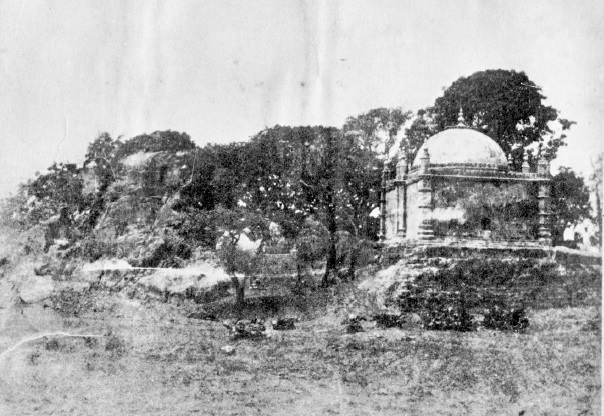Mystic saint Badr al-Din | Bangladesh on Record
June 17, 2019
Ananta Yusuf
Amra achi polapan, Gazi ache nigahman
Shire Ganga dariya Panch Pir, Badr Badr Badr
(We are the young, Gazi is our protector
the sea of Ganga over us, the five saints, Badr Badr Badr)
Interestingly, in different parts of the Bay of Bengal, especially on the coastal belt, people from all religions make small boats carrying lamps, flowers and coconut oil to observe a festival celebrating Badr al-Din as the Pir or, in other words, the ‘Sultan of Water’. In Chittagong the festival takes place at the end of the Bengali month of Srabon. The festival is celebrated mostly by fishermen. Devotees believe that Badr al-Din is the ruler of the waters. His miraculous power over the water saves many lives.
From the 6th to the middle of 16th century, Muslim traders ruled over the oceans. During the Sultani period in Bengal, as the war-affairs became stable around 14th century, Muslim saints began immigrating to Bengal from different parts of India. Historians believe that Badr al-Din arrived in Chittagong around the same time.
Badr al-Din was a powerful figure. The community of fishermen needed a deity to worship whom they would call out to when they were in trouble at sea. Geographically, the coastal belt of the Bay of Bengal and the Andaman Sea share similar attributes. Badr-Al-Din’s power over the ocean addressed the core need of a large community who depended on the seas for their livelihood. They believed that the Badr could save people from storms, thunder, fiery wind and from all dangerous situations in the ocean.
For that reason, the shrine of Badr, which is commonly known as Badr Mokams, can be found along the coast of Burma to Thailand in the southeast and also from India to the Maldives in the southwest. Muhammad Siddiq Khan, the former librarian of Dhaka University, in one of his writings, says that the Badr Mokams are “universal shrines”, i.e. they are accepted by the Buddhists, Hindus and Muhammadans, natives of India, Burmese and Chinese alike, which is a sure sign that they are symbols of the animistic faith which underlies all Indian regions. Their chief votaries are sailors, fishermen and those who obtain a livelihood on the water.
Since Badr is known as the guardian of the sailors and the sea, the fishermen recite and sing songs in chorus before starting out on journey. Some say that the Pir Badr al-Din flew on a stone to the shore of the Karnaphuli. Others claim that he reached Chittagong riding on the back of a fish. He arrived at the shore after the sun set on the horizon of the Bay of Bengal. Why would he choose to come to Chittagong? Legends state that at that time Chittagong was notorious for jinns and was a dangerous jungle. Human beings had more or less abandoned the place. Rivers and the sea had become home to wild beasts. To free the place from all evil, the Holy Pir decided to stay in Chittagong.

According to legend, upon the Pir’s arrival in the port city, he requested the jinns for a small place where he could light a chati or lamp. The jinns accepted his request and granted him a small piece of land. The miraculous lamp propelled a huge blow of light over the whole region and drove the evil spirits away from the hills. Many researchers believe that the name Chittagong came from the ‘chati’ that Badr al-Din had lit.
Even now, thousands of devotees pay tribute to Badr al-Din at the top of the Cheraghi Pahar of Chittagong, where believers have faith that the Pir still has his lamp lit for them. One hopes that the light of Badr keeps shining upon the world, illuminating the life of millions.